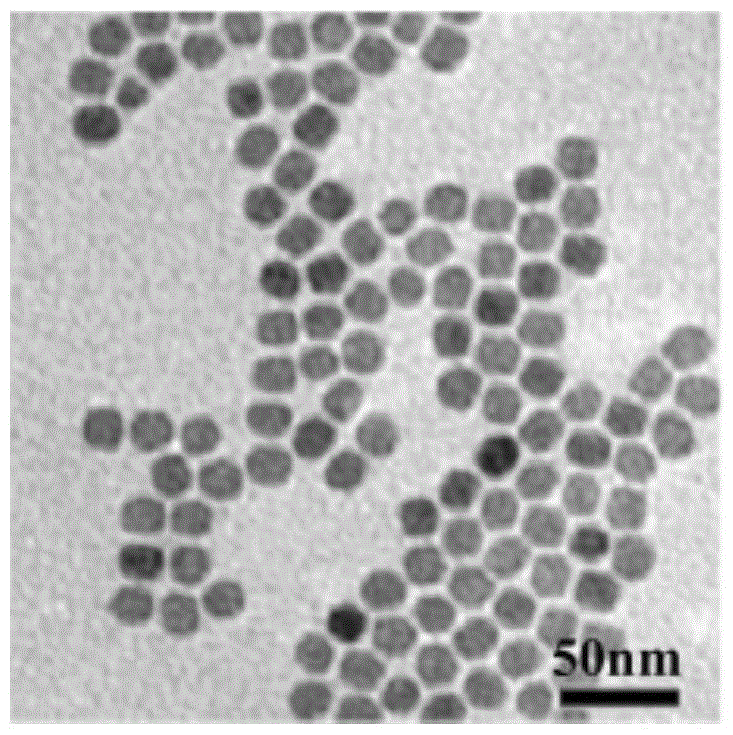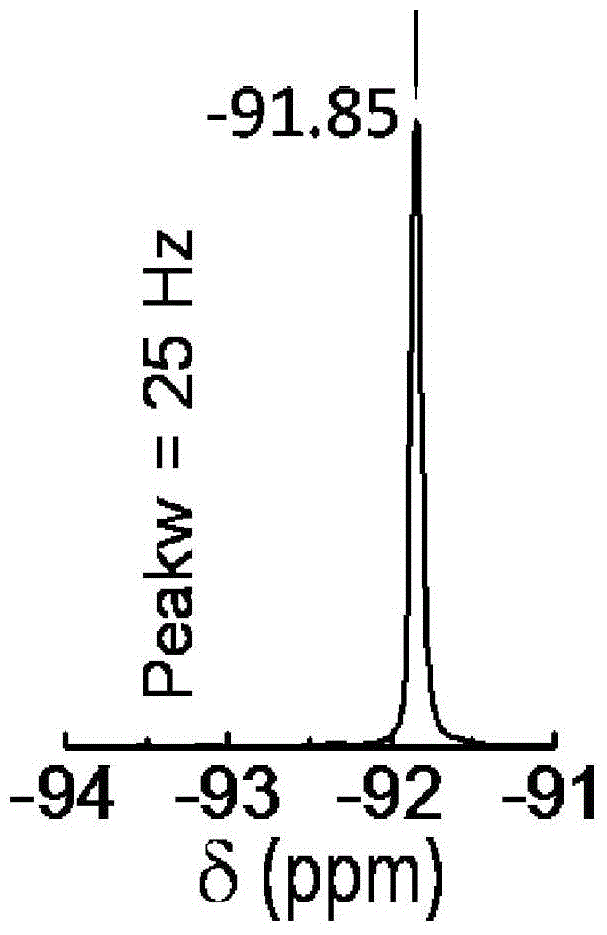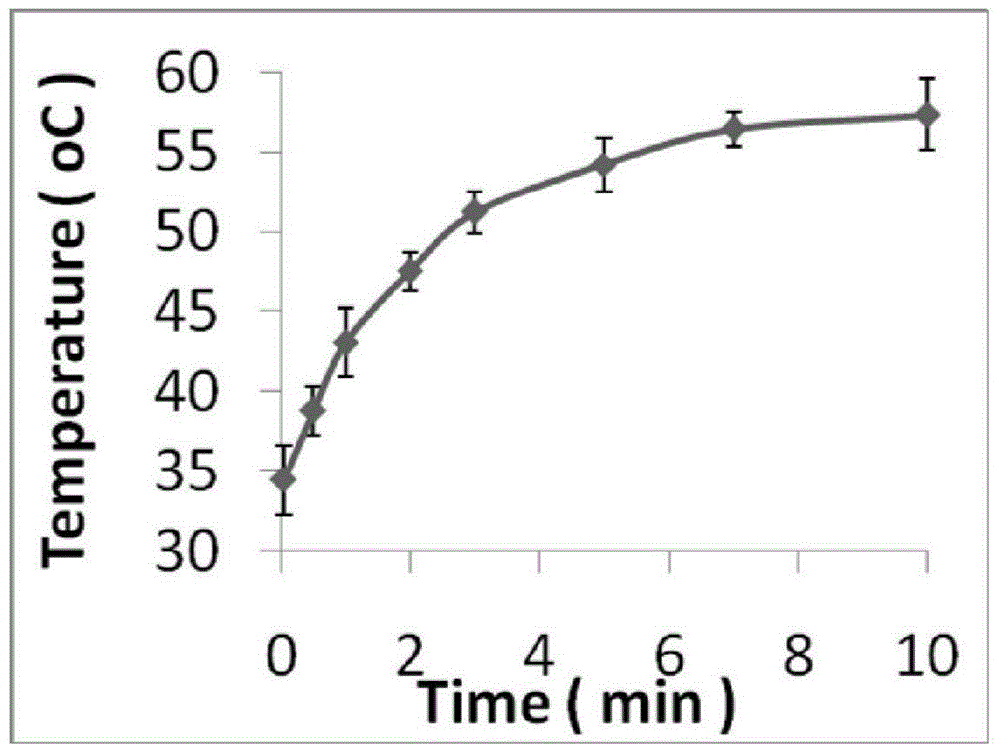Nanoprobe applied to <19>F magnetic resonance imaging and photothermal therapy and preparation method of nanoprobe
A nanoprobe and nanoparticle technology, which is applied in the field of nanomaterial preparation, can solve the problems of non-dispersion of fluorophilicity and low F signal, and achieve the effects of small particle size, high biological stability and good biocompatibility
- Summary
- Abstract
- Description
- Claims
- Application Information
AI Technical Summary
Problems solved by technology
Method used
Image
Examples
Embodiment 1
[0019] a. Cu dispersed in 4 mL of chloroform 1.75 S nanoparticles, where Cu 1.75 8 mg of S nanoparticles, 22 mg of TMOS, 28 mg of perfluorocrown ether and 40 mg of polysuccinimide, dispersed in 1 mL of chloroform for use;
[0020] b. Add 10 mL of 10 mM NaOH aqueous solution to the dispersion in step a, and ultrasonicate at 300 W for 6 minutes;
[0021] c. Stir at room temperature for 12 hours to distill off the chloroform, centrifuge (15,000 rpm) for 15 minutes to obtain nanoprobes, and redisperse them in 1 mL of deionized water.
[0022] The nanoprobe dispersion liquid with a concentration of 4 mg / mL prepared above was used at a wavelength of 808 nm and a power of 458 mW / cm 2 Under the excitation, the measured photothermal conversion efficiency is as high as 54.13%.
[0023] Mouse 4T1 tumor model, orthotopically inject 100 microliters of the nanoprobe dispersion solution prepared above, at an optical power density of 1W / cm 2 The thermal conversion curve of 808nm near-infr...
PUM
 Login to View More
Login to View More Abstract
Description
Claims
Application Information
 Login to View More
Login to View More - R&D
- Intellectual Property
- Life Sciences
- Materials
- Tech Scout
- Unparalleled Data Quality
- Higher Quality Content
- 60% Fewer Hallucinations
Browse by: Latest US Patents, China's latest patents, Technical Efficacy Thesaurus, Application Domain, Technology Topic, Popular Technical Reports.
© 2025 PatSnap. All rights reserved.Legal|Privacy policy|Modern Slavery Act Transparency Statement|Sitemap|About US| Contact US: help@patsnap.com



